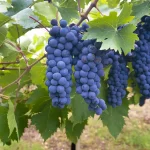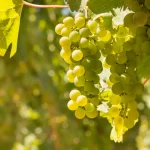If you had to make a list of some of the most popular red wine varieties today, Cabernet Sauvignon would absolutely be right at the top. This grape is found in just about every country in the world that produces wine.
It’s available in a wide range of climates ranging from the hot temperatures of Australia to the colder weather of Canada. Italy, California, South America – you name it, you’ll find a country where Cabernet Sauvignon is produced.
At one point, it was the most commonly planted red wine grape in the world until Merlot took its title in the 1990s.
As is true with most other wines, Cabernet Sauvignon can be an acquired taste – but it’s also one you’ll be glad you did.

Unique Cabernet Sauvignon Features
One of the more unique things about Cabernet Sauvignon is that it tends to develop the best in oak barrels.
This is as opposed to other types of wine that can leverage steel barrels as well without negatively impacting the eventual quality.
The grape itself usually grows best in warmer climates. This is why it’s a very common inclusion on vineyards in places like France and Napa Valley, California.
Both mint and eucalyptus are also considered to be flavors that are unique to Cabernet Sauvignon, although this is mainly true of a lot of the wines that are produced in the United States.
Here, the cooler climates contribute to changes in the soil when compared to wines that are produced somewhere like South America.
It’s usually common in wine that comes from a place where the Eucalyptus tree is common and Washington State is one of those places.
Flavors & Aromas
Cabernet Sauvignon tends to have a dryer style than other types of red wines. It’s available in medium-bodied and full-bodied options to take advantage of.
In terms of flavors, Cabernet Sauvignon offers components that are characteristic of darker fruits like:
- Plums.
- Black cherries.
- Blackberries.
They’ll also have notes of vanilla, licorice and even black peppers depending on the maker.
With regard to their aromas, you’ll usually be able to get a sense of tobacco and even leather – although don’t let that dissuade you.
All of that comes together to form something that pairs well with red meat in particular – a perfect combination if there ever was one.
Related: Checkout the differences between Cabernet Sauvignon and Syrah/Shiraz.
Color
While the color of your next glass of Cabernet Sauvignon will obviously vary slightly depending on who produced it, you’ll usually be able to note a deep, purple/red color.
Just be sure to hold your glass up to the light to really let this visual display take hold.
As is true with other wines, the grape skin is what ultimately plays the biggest role in the color. The longer the skin is allowed to ferment, the more color will be added to the end product.
Wine Structure – Acidity, Body, Sweetness, Tannin and Alcohol
When compared to other red wines, Cabernet Sauvignon has what is considered to be a medium acidity. This is due in large part to the dark fruit flavors as outlined above.
In the context of wine, the term “body” refers to how “heavy” it is.
A glass of water would be considered heavier than a glass of milk, for example, due to the unmistakable thickness of the latter.
Cabernet Sauvignon has a medium-to-full body.
As is true with any wine, the sweetness levels will depend on the amount of sugars that are left over from the production process.
As these levels tend to be on the lower side with Cabernet Sauvignon, the wines themselves are dryer as a result.
These, coupled with the tannins, are also responsible for that dryness.
As a bonus, the tannin is also a reason why Cabernet Sauvignon has a high aging potential. It’s the type of wine that literally gets better the longer you hold onto the bottle, as opposed to other varieties that you should drink right away.
Finally, with regard to the alcohol content in a bottle of Cabernet Sauvignon, you’re typically talking about anywhere between 13.5% and 15.5% ABV.
Although this, too, will vary depending on the producer. This is slightly elevated compared to other wines, which is a big part of the reason why it pairs well with red meat in particular.
Related: The heaviest red wines.
Common Features of Cabernet Sauvignon Taste Profile
The most important thing to understand about the taste profile of any wine is that it will be impacted by an enormous number of factors.
That’s why you can enjoy a glass from one producer and dislike one from another, even though they’re technically the same thing.
In terms of Cabernet Sauvignon, one of those factors has to do with the growing environment.
The climate of the country it was grown in, coupled with the soil, all dictate how it will eventually taste. The fermentation process is another element, as is the aging process.
All of this is to say that if your Cabernet Sauvignon came from a warmer climate, it will have a lot of notes of those darker fruits as mentioned above. That includes blackberries, black cherries and more.
A bottle from a cooler climate will likely be a little more on the tart side. It’ll have flavors of raspberries or even strawberries.
How the wine was aged will also affect the taste profile, particularly in terms of the amount of spices that are present.
If the wine was aged in oak barrels, you’ll likely get hints of things like black pepper. Steel barrels would probably strip this from the taste.
- Shrimp Cocktail (and More) Wine Pairing Guide - 09/06/2022
- What Wine Serving Sizes Look Like: Standard Size and More - 08/06/2022
- How Much Sugar is in Wine: Glass and Bottle Sugar Content - 08/06/2022






